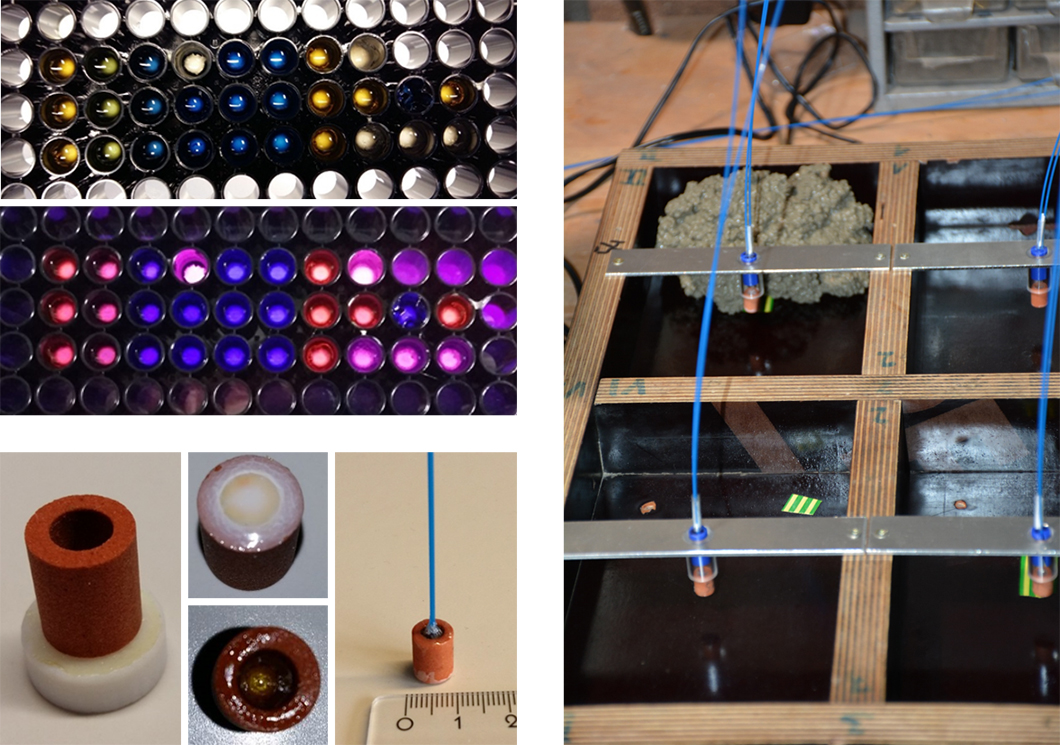
Microplate with sensor layers showing the fluorescence response (top left), sensor preparation (bottom left), sensors during concreting
Source: BAM, divisions Biophotonics, Sensors, Measurement and Testing Methods, NdT Methods for Civil Engineering
Based on fluorescence, a novel concept for pH measurements has been developed that is particularly suited for monitoring carbonation-induced corrosion in concrete structures. The method uses a ratiometric measuring principle that exploits the pH-sensitive color change of thymol blue in the basic pH regime and the emission properties of two different core-shell quantum dots. The transition point of thymol blue in a suitable hydrogel matrix was determined at about pH 11.6, which is ideal for the intended application. Besides the basic spectroscopic characterization of the ratiometric response, a new design for a sensor head suitable for installation in concrete matrices is presented. For this purpose, a synthesis method was developed which allows the preparation of a double layer of polymers containing either thymol blue or a quantum dot mixture in a porous ceramic tube. Validation experiments in solutions with different pH values and in concrete specimens provide promising results and pave the way for future field tests in concrete structures.
Fibre optic ratiometric fluorescence pH sensor for monitoring corrosion in concrete
Jürgen Bartelmeß, David Zimmek, Matthias Bartholmai, Christoph Strangfeld, M. Schäferling, erschienen in Analyst, Issue 6, Seiten 1-7, 2020
BAM, divisions Biophotonics, Sensors, Measurement and Testing Methods, Non-destructive Testing Methods for Civil Engineering


